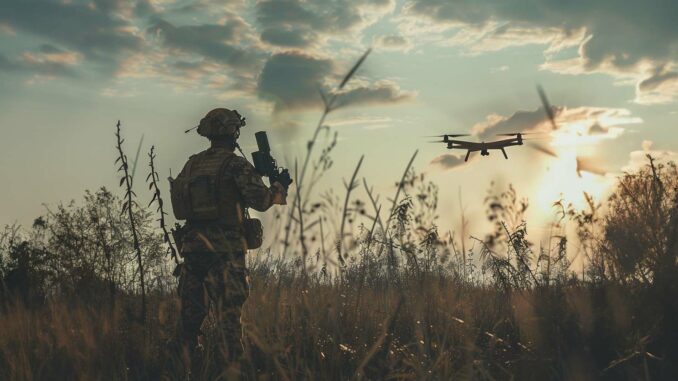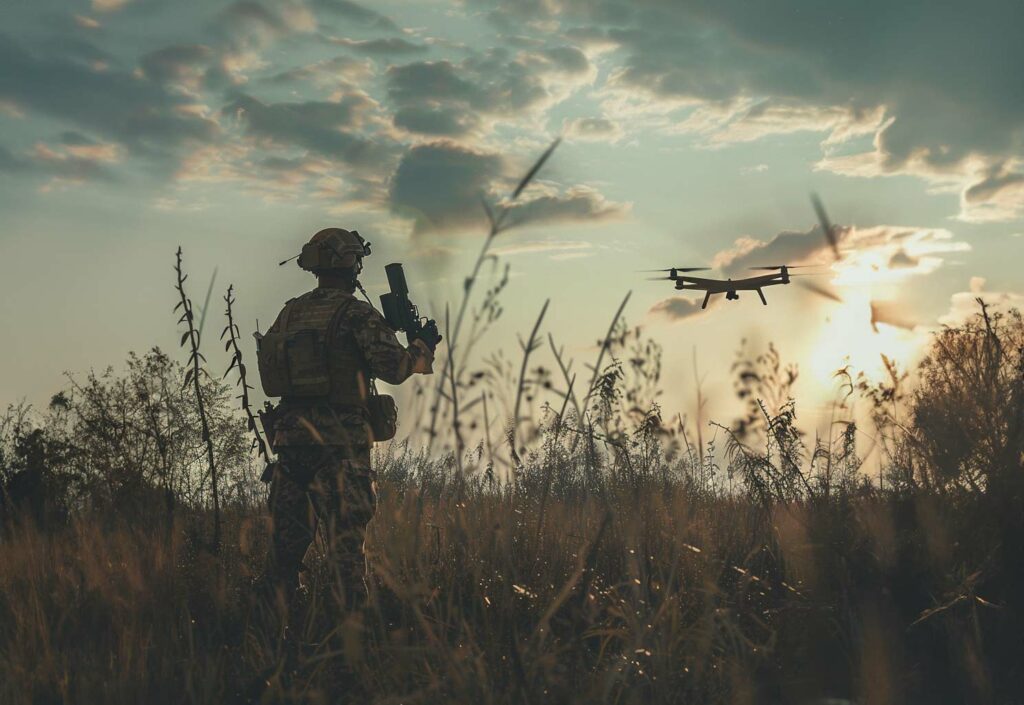
The US Army is experimenting with man-machine integration on the battlefield, promising a significant reduction in risk for soldiers.
The future of warfare seems to be on the horizon, marked by unprecedented collaboration between man and machine. The US Army, through its Project Convergence initiative, recently offered a glimpse of what tomorrow’s battlefield might look like. This vision is based on the far-reaching integration of aerial and ground drones, robotic combat vehicles and other advanced technologies, aimed at dramatically reducing soldiers’ exposure to danger.
The vanguard of military technology
The technological revolution on the battlefield revolves around the integration of advanced systems such as Anduril Industries’ Ghost-X drone, a small but remarkably effective aerial reconnaissance tool. Able to fly discreetly over areas of interest, it transmits crucial information on enemy positions, playing a key role in strategic planning. At the same time, the octocopter represents a significant advance in terms of ammunition delivery, enabling highly accurate targeting thanks to its ability to carry and drop adapted payloads, such as 60mm ammunition. Throwbots, meanwhile, offer invaluable ground reconnaissance capability, capable of being projected into high-risk areas to transmit data in real time. Armed robotic combat vehicles increase offensive effectiveness by providing mobile and powerful fire support, while quadruped robots, used for reconnaissance and surveillance, enrich operational control with diversified tactical views, enabling decision-making based on comprehensive and up-to-date information.

Towards successful integration
The successful integration of man and machine in military operations transcends the simple incorporation of robots and drones on the battlefield. It involves setting up a robust, secure network, essential for communication and control of robotic units, while guaranteeing protection against cyber attacks. This network must enable adequate operational autonomy, allowing machines to perform specific tasks without constant human intervention. In the face of rapidly evolving technology, the army is faced with the challenge of modernizing its procurement procedures. This requires an overhaul of traditional, often slow and inflexible processes, to adopt a more agile and responsive approach, capable of aligning with technological advances and responding effectively to the changing needs of the battlefield.
Projecting into the future
The Project Convergence exercise served as a catalyst to test the effectiveness of these new integrated training courses. With a funding request for fiscal year 2025 marking the first budget commitment for these formations, the US Army is positioning itself at the forefront of military innovation. The goal is clear: to enable machines to “take risks” in place of humans, while enriching soldiers’ decision-making with crucial information.
Challenges and prospects
The successful integration of man and machine on the battlefield will not be without its challenges. In addition to technological and operational necessities, the Army must also convince Congress to adapt acquisition processes to enable greater responsiveness in the face of rapidly evolving threats and technology. The transition to effective man-machine warfare will require not only technological evolution, but also cultural change within the Army and close collaboration with industry and government partners.
The future of combat, as imagined by the US Army, is based on a synergy between man and machine, where each entity plays a complementary role to accomplish the mission with minimum risk to soldiers. This vision, while promising, also raises ethical and strategic questions about the future of warfare. Nevertheless, with the right support and a willingness to adapt, the US military could well define a new paradigm in the conduct of military operations.
War Wings Daily is an independant magazine.